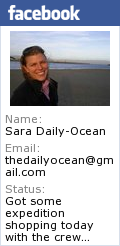We all know North Carolina has research triangle between Raleigh-Durham and incorporates Chapel Hill. But, did you know that there is a marine science research quadrant in the state as well. First, you have the Division of Marine Fisheries in Morehead City (as well as the Duke and NOAA labs in nearby Beaufort). Next, in the center of the state you have the universities in the traditional research triangle. Then there are aquariums, nature reserves and UNC Coastal Studies program in the northeast Manteo area. Lastly, the National Undersea Research Center and the Coastal and Ocean Research and Monitoring Program are both located in the Wilmington area. Wilmington is also home to the state’s Sea Grant program as well as the Cape Fear Community College‘s Marine Advanced Technology Engineering program. Please click on the image below for a far superior version.
Image (c) ncmarinescience.com














What people are saying …